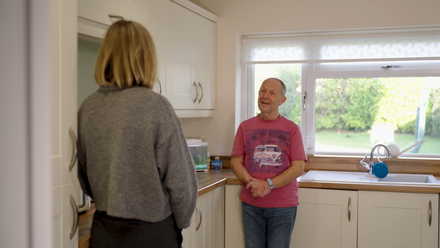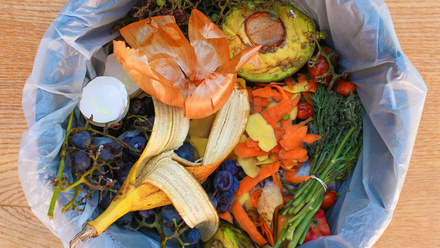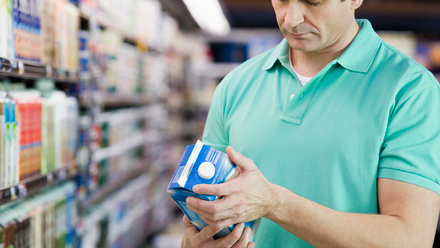The BDA's Corporate Member - Nutricia, have rolled out a sustainable initiative to combat one use plastics in home enteral feeding.
Paediatric dietitan, Mikayla Profe-Fuchsloch discusses her experience and perspective with using Sterifeed reusable reservoirs in practice.
I work as the paediatric dietetics team lead at Walsall Healthcare NHS Trust, and my caseload comprises many children who are home enterally fed.
Many paediatric home enteral feeding patients use feeds that are not pre-mixed and thus require a reservoir for powdered feeds to be reconstituted and stored in during feeding times. Some paediatric patients use reservoirs for water and medication administration too.
My experience was that out of my caseload of 123 paediatric patients, 59 used Flocare single-use reservoirs. Many of these patients used more than one container per day. Oftentimes parents would ask me “can I reuse Flocare containers?”
Some parents reported the following experiences of Flocare reservoirs: “it seems wasteful to use a container once only and then throw it away”, “I have boxes upon boxes of Flocare containers in my home and it takes up a lot of space”, “the boxes of Flocare bottles are stacked along my staircase, it is becoming a fire risk but I have nowhere else to put them.”
Decision to change to Sterifeed
I saw the banner on Connections about Sterifeed and our Hospital Account Manager, Sue Samuel, gave me more information and answered my many questions about the product. Reading through the patient and professionals guides really helped me decide to make the change. I discussed it with the professional lead for Dietetics at my Trust, and she supported my plans to switch the paediatric patients over.
Steps taken to change over
In January 2021, I set up a meeting with our community children’s nurse team lead to discuss the possibility of changing over from Flocare to Sterifeed.
I had two key reasons for changing– to reduce plastic waste and to improve patient experience. She agreed to the change and agreed with the parents’ sentiments that single-use reservoirs are not environmentally friendly and rather wasteful.
I wrote to all parents of patients using 500ml and 1000ml Flocare reservoirs explaining that we would be moving over to Sterifeed 250ml and 500ml reservoirs, and that they had two months in which to let me know if they had a specific reason to opt-out of the change.
I enclosed the patient information leaflet on Sterifeed so that parents would be fully aware of what using Sterifeed would entail. I enclosed the patient information leaflet, and reiterated that these bottles should be recycled after 30 uses. On 1 April 2021, I switched patients from Flocare to Sterifeed, except those who had opted out.
Reception
59 patients on the paediatric home enteral feeding caseload used Flocare, of which 7 opted out of using Sterifeed due to parental concerns around safety of reusing/sterility, and two patients were managed at different trusts but were under the Walsall contract so remained unchanged. That left 50 patients who were changed over to Sterifeed.
By the end of April 2021, all patients had received their first Homeward delivery with Sterifeed reservoirs instead of Flocare reserviors.
In this short period of time (less than two months) I have received positive feedback from parents. Here are some examples:
- Parents felt reusing Sterifeed reservoirs was more environmentally friendly
- The Sterifeed reservoirs took up less space in the home due to a much smaller order quantity delivered each month
- Sterifeed containers are more “solid” and less collapsible
- Washing and sterilising Sterifeed reservoirs gave a feeling of “being a parent and not a nurse” in the sense that washing and sterilising the Sterifeed containers (especially the 250ml container) mimicked “normal” or “typical” infant feeding
- Parents felt they were being less wasteful by reusing the containers
The only negative feedback was from the parents of three different children; two parents wanted to change back to Flocare due to the size of the reservoir, and one parent who did not want to wash the reservoirs.
Considerations
Manually changing every child’s Homeward regimen from Flocare to Sterifeed took some time, but was not insurmountable. Remembering to add on the universal adaptors was an important step that I forgot a few times!
Another consideration was that patients who usually used 1000ml reservoirs, for powder-based reconstituted feeds, needed their recipes adjusted. For example, a patient who used a 1000ml reservoir for 750ml feed meant that I had to give parents a new recipe to mix ~500ml in one Sterifeed bottle and ~250ml in another.
Recommendations
This thoughtful and sustainable initiative from Nutricia has improved the experiences of my patients, their parents and the professionals who work with them. I would strongly encourage other dietitians and community nurses to consider switching their patients from Flocacare to Sterifeed.
The positive feedback has been encouraging – it has improved the experience of parents/carers in ways that I could not have foreseen such as providing a sense of partial de-medicalisation of feeding their children.
As a professional, I am so grateful that this initiative by Nutricia has had a wide-ranging impact from improving patient experience to helping create a more sustainable future for all. I look forward to many more positive reports in future!






